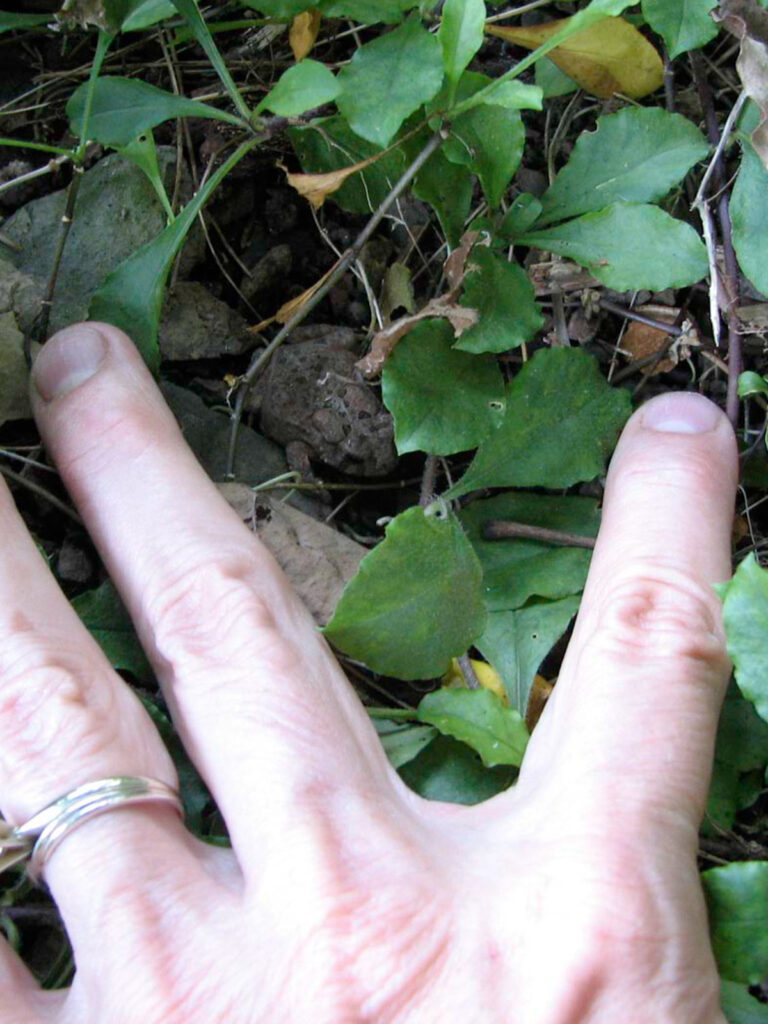
We have LOTS of vegetation for them to use as cover as well as lots of rocks and logs to hide under.
I found they’re most satisfied with the natural accommodations of our yard — in other words, just places to be other than turf grass. Trying to recreate a natural setting seems to be best for frogs and most other creatures.
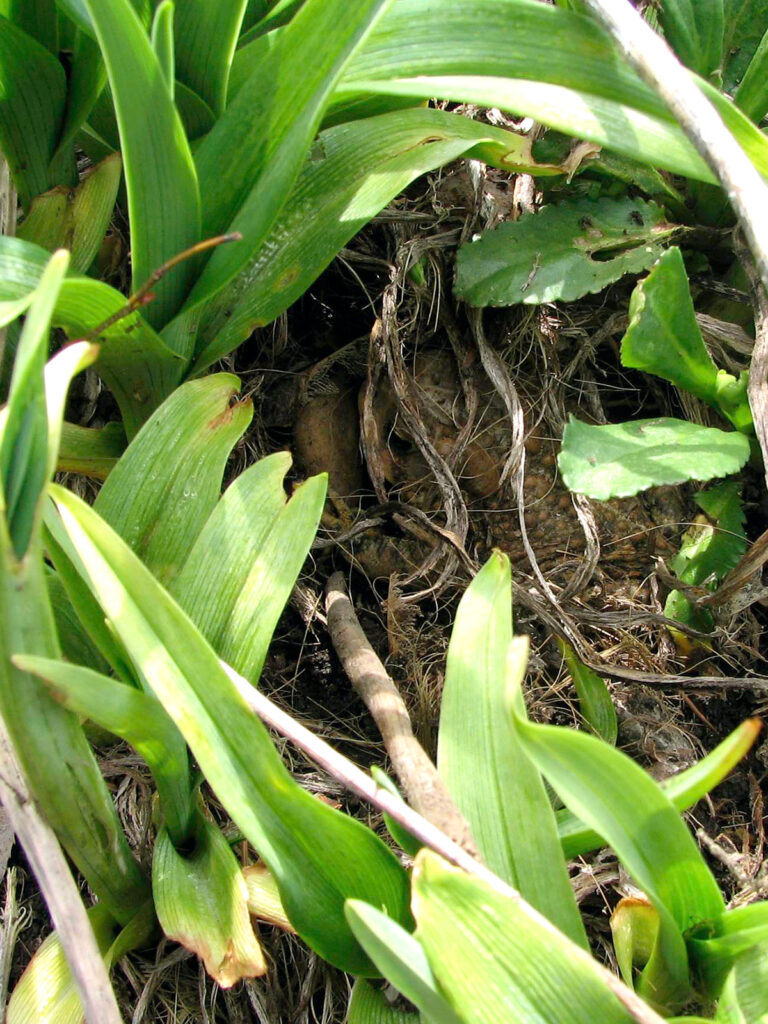
It’s always a treat when we happen to spot them during the day, usually under a log or hiding in a plant, as in the photo.
This toad, a nocturnal creature that doesn’t visit the pond except during mating season, is spending the day in this lily. He’s very well-hidden.
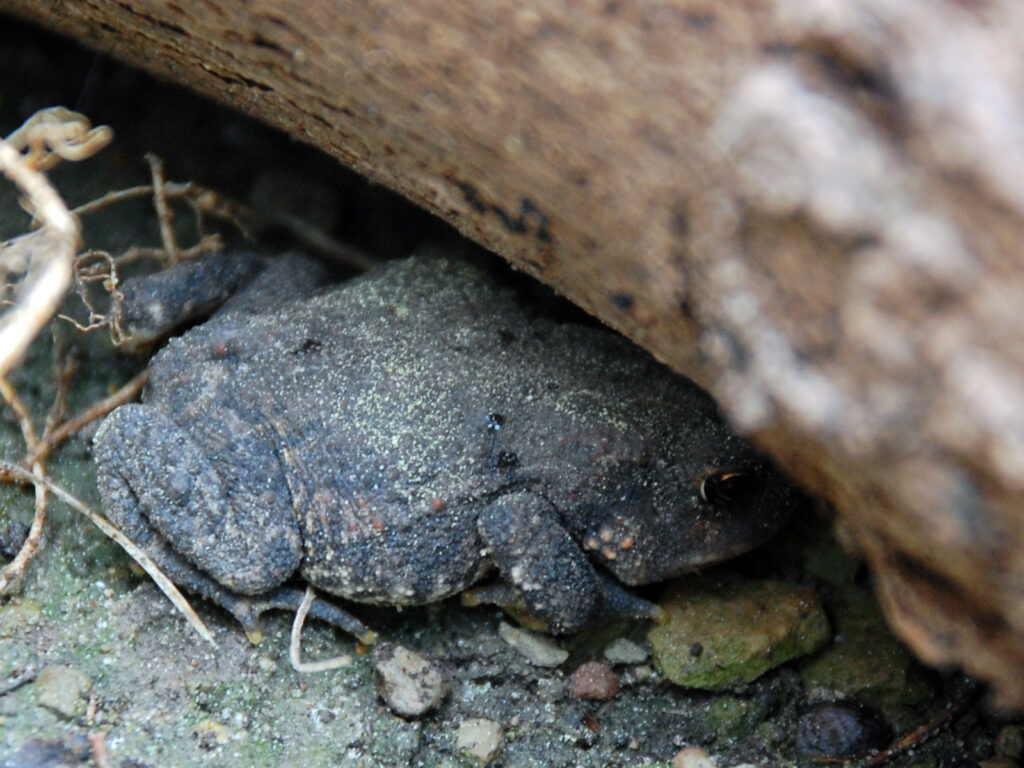
We’ve sometimes come across toads when we’re digging in the flower beds or in the vegetable garden, especially in early spring before they’ve come out of hibernation.
I worry that someday we’ll thrust the spade in the soil and come up with half a toad. I try to wait as long as possible in the spring before I start digging.
Man-made cover
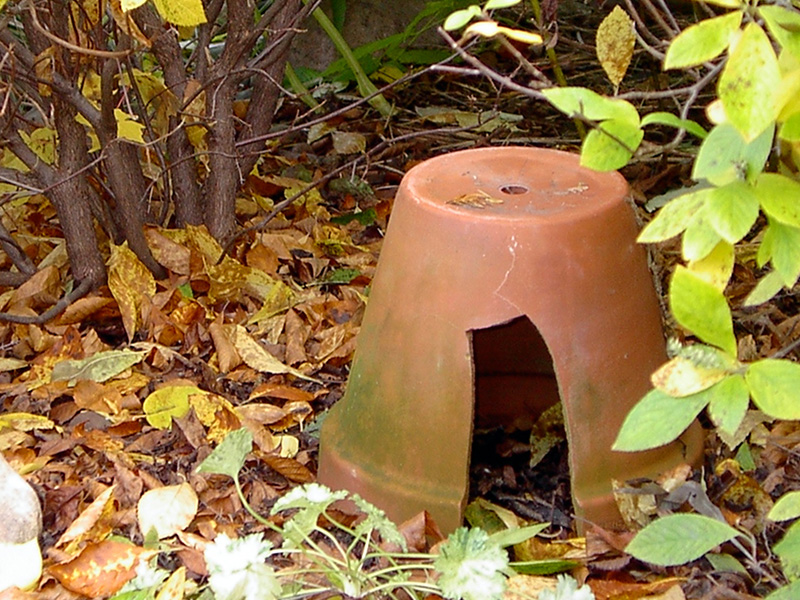
I’ve tried providing a few types of man-made cover for amphibians , such as the “toad abode.” We happened to find this broken flower pot at the curb. To its former owner, it looked like junk, but to us, it was a toad abode. We thought it was a real find since it was broken in exactly the right shape for a toad abode door. I have never seen a toad using it since, happily, we have a whole yard full of wonderful spaces for toads to be.
I still like the looks of my toad abode, so we have left it in the yard. It serves as a reminder of our quest for providing cover for even curmudgeonly-looking creatures like our toads, but we don’t rely on it to provide cover.
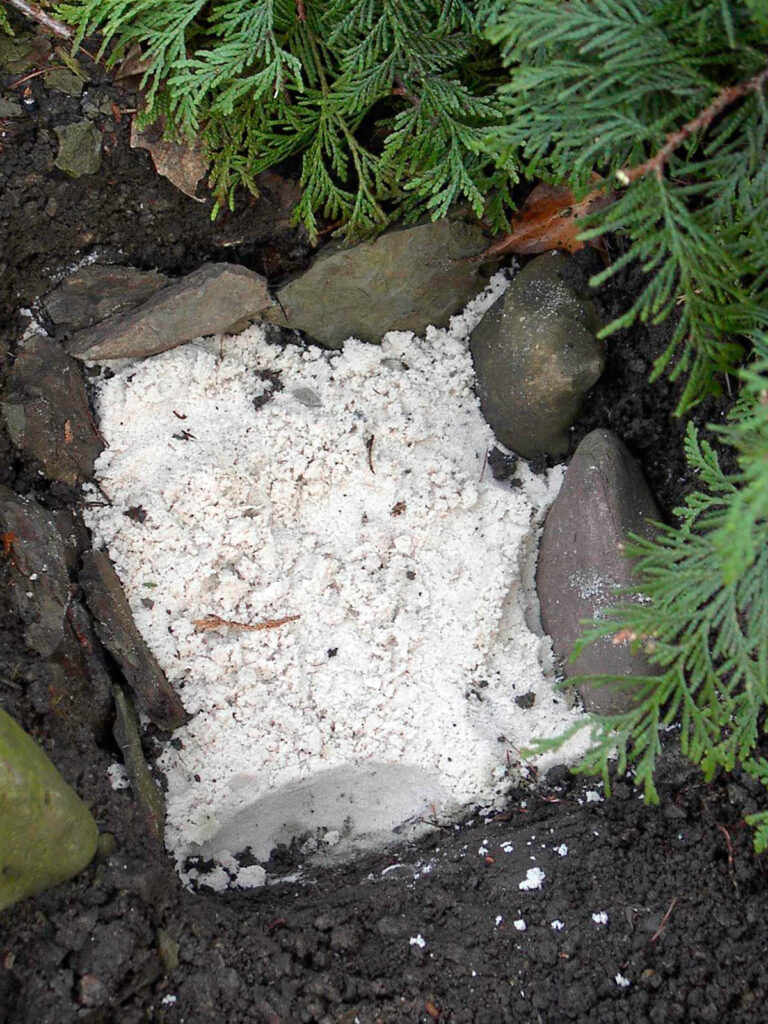
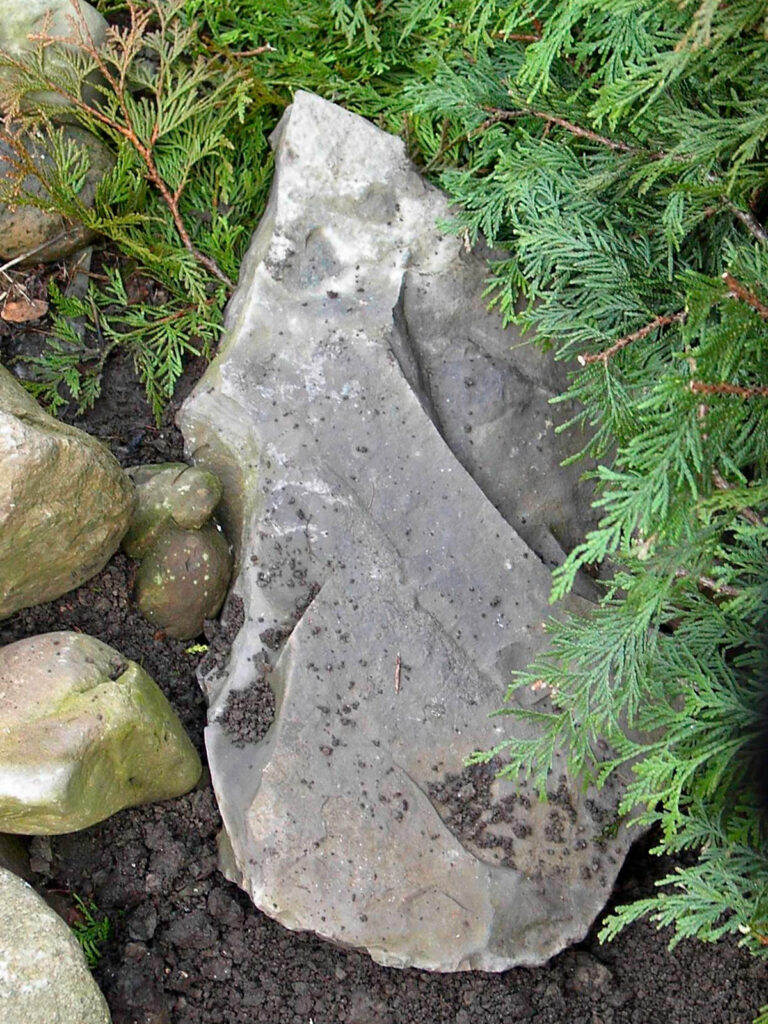
On the left is the beginning of a “hibernaculum” I tried to create.
I think things like this hibernaculum must have been created for yards where there’s turf grass everywhere with no place for even a toad to overwinter. I don’t know if any toads ever used it. I doubt it since there are so many areas in our yard where they can burrow down into soft soil for the winter.
Overwintering frogs
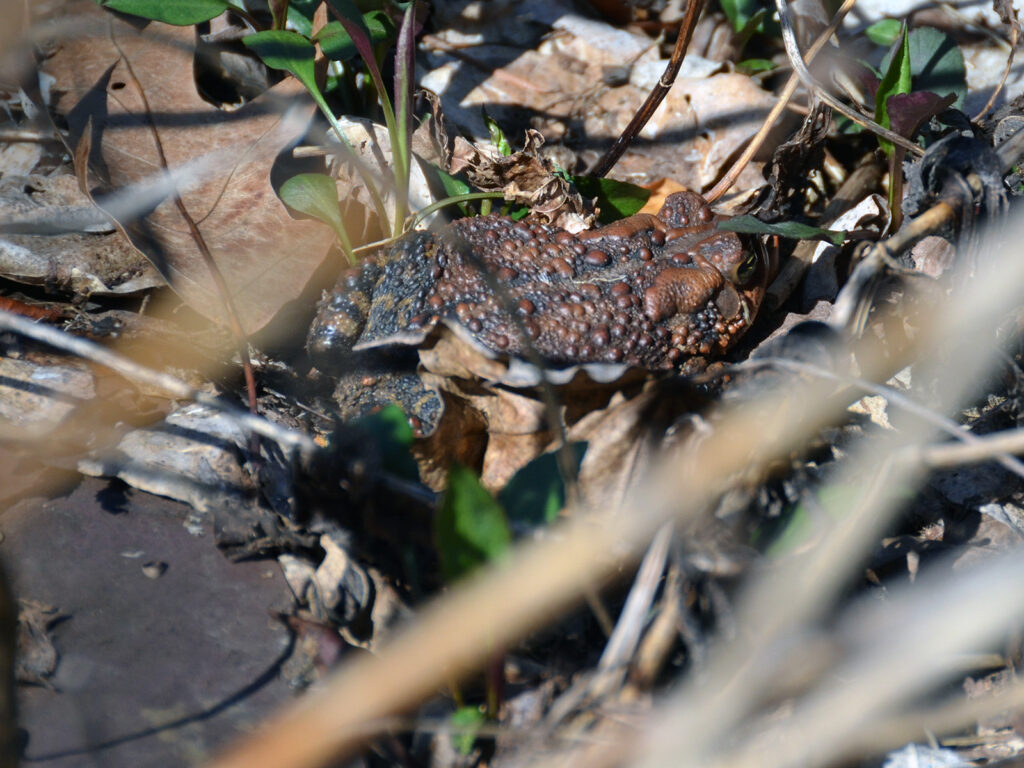
This large toad has just come out of hibernation. Because of its large size, I knew that it was a female. I assume it might have spent the winter under the stone at the left (in the side road flower bed.
It spent a few days pretty motionless … until the first rainy day: a sure sign for males to gather in the pond and sing for females. Sure enough, we found mating pairs in the pond the next morning!
Though we don’t seem to have a problem with toads overwintering, our poor green frogs haven’t successfully made it through the winter. The key differences is that the toads overwinter in soil (and we have LOTS of loose soil) but our pond apparently freezes too thoroughly or too often or something for our frogs to survive. I dread each year finding dead frogs in the pond. Next (in winter 2022-23) we’ll try covering the opening to the skimmer in the hope that the center of the pond will be deep enough. We’ll keep exploring this year and try to find a solution … IF we’re lucky enough to have some green frogs show up in our pond this year!
Resources
- Robyn’s Pond Page:
Reflections
Come back and wake me up … half past May!
~ Arnold Lobel (as spoken by Toad), Frog and Toad
